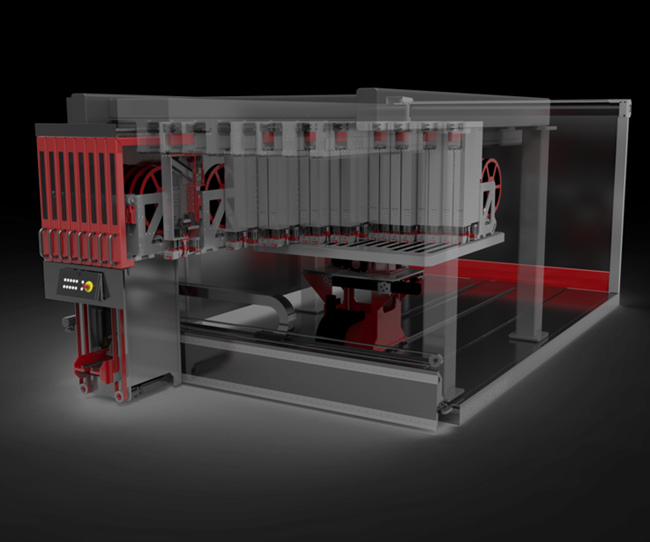A new method of carbon fiber composite 3D printing is under development at Swinburne University of Technology.
Part of the Australian Prime Minister’s Industry 4.0 Testlab initiative, the so-termed ‘Multilayer’ technology is delivered by Fill, a special machinery and plant construction company headquartered in Austria.
“In order to make high value-added products from such materials affordable to manufacture at scale in Australia,” explains Professor Aleksandar Subic, Swinburne’s Deputy Vice-Chancellor of R&D, “we are developing technologies and processes that have the potential to disrupt and transform the manufacturing and infrastructure industries,”
“The partnership with Fill is of particular importance to our strategy as it allows us to introduce a unique form of 3D printing technology for composite products to our lab and fully automate the process.”

An Australian Government Task Force
Industry 4.0 Testlabs were introduced as an initiative by the Australian Government as part of specialized task force chaired by Professor Aleksandar Subic, Swinburne’s Deputy Vice-Chancellor of R&D.
According to Professor Subic’s official introduction on the concept, “Testlabs are where Industry 4.0 within an Australian manufacturing context is being designed, developed and trialed in partnership with industry and other stakeholders.”
In addition to Swinburne, there are currently five further Industry 4.0 Testlabs, located at Flinders University, Queensland University of Technology (QUT), the University of Technology Sydney (UTS), the University of Western Australia and RMIT University.
Multilayer composite 3D printing
Fill’s Multilayer 3D printing method for carbon fiber composites, works by thermally bonding successive layers of tape feedstock.
Part strength is created by the programmable orientation of fiber. The maximum build area is 1,600 mm long by 1,600 mm wide (subject to change).
According to the company, “The multilayer enables very fast compilation of semi-finished fiber composites, thereby meeting the prerequisite for high component production rates.” Ideal for Industry 4.0 concepts, the machine can also be easily integrated into an existing forming and injection molding process, which is Swinburne’s intention.
Preparation of a Digital Twin in partnership with Siemens
In the Swinburne Industry 4.0 Testlab, engineers are creating a digital twin of the end to end manufacturing process of carbon fiber composite parts. In 2017, Siemens granted the university $135 million to advance the concept of industrial digitization in Australia’s first fully immersed Industry 4.0 facility. Siemens is also contributing new technology to the process.
After 3D printing, Fill Multilayer components must be preformed, compression molded, inspected and trimmed.
Partners Marand, a precision engineering solutions provider, CNC Design, Australian industrial equipment supplier AustEng, and Bosch are also contirbuting new technology, to refine and streamline the composite manufacturing workflow.

Strengthening Australia’s market position
Professor Bronwyn Fox, Director of Swinburne’s Manufacturing Futures Research Institute, explains how this technology, within the university’s specially made Industry 4.0 Testlab, is key to the nation’s opportunity to leverage “high value-add digital design, simulation and manufacture of products.”
Additionally, Professor Fox states:
“Swinburne, with our partners, will lead the world in providing digital manufacturing solutions to secure Australia’s place in the lucrative intermediate product market.”
Swinburne is also the recipient of a $994 thousand USD grant to develop a 3D printing ‘Repair Bot’ for the automotive industry.
For more research and education news subscribe to the 3D Printing Industry newsletter, follow us on Twitter, and like us on Facebook.
Looking to get involved in a new additive manufacturing project? Join 3D printing jobs for the latest vacancies from FATHOM, XYZPrinting and more.
Vote now in the 2018 3D Printing Industry Awards for technologies and research projects of the year. Want to design the trophy? Enter the 2018 3D Printing Industry Awards design competition. sponsored by Protolabs now.
Featured image shows a digital demo of Fill’s Multilayer machine. Image via Fill



